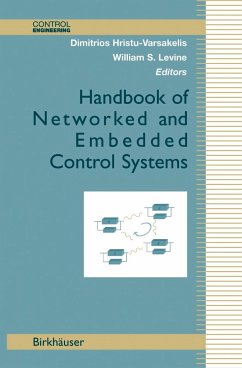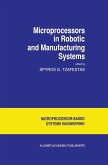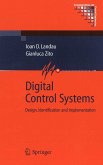The Handbook of Networked and Embedded Control Systems, the first of its kind, provides engineers, computer scientists, mathematicians, and students a broad, comprehensive source of information and technology to address many questions and aspects of embedded and networked control. A carefully organized collection of important results, tools, software, and technology, this work unifies into a single reference many scattered articles, websites, and specification sheets - information that might otherwise be difficult to find.
Key topics and features include:
- Self-contained, sharply-focused articles
- Clear structure and presentation of concepts in intuitive order
- Separation of material into six main sections: Fundamentals, Hardware, Software, Theory, Networking, and Applications
- Case studies, experiments, and examples that provide a multifaceted view of the subject
- Information about commercially available tools and hardware
- Comprehensive bibliographies and index
This is an indispensable text for anyone interested in knowing more about embedded and networked control systems. Researchers will appreciate the handbook's up-to-date results in the theory of embedded control; developers and users will value its information on special-purpose computer hardware and operating systems modifications that support real-time control; students will find the systematic organization and wide coverage useful for learning and reference.
Thishandbookwasmotivatedinpartbyourexperience(andthatofothers)in performing research and in teaching about networked and embedded control systems (NECS) as well as in implementing such systems. Although NECS- along with the technologies that enable them-have become ubiquitous, there are few, if any, sources where a student, researcher, or developer can gain a su?ciently broad view of the subject. Oftentimes, the needed information is scattered in articles, websites, and speci?cation sheets. Such di?culties are perhaps to be expected, given the relative newness of the subject and the diversity of its constitutive disciplines. From control theory and communi- tions, to computer science and electronics, the variety of approaches, tools, and language used by experts in each ?eld often acts as a barrier to und- standing how ideas ?t within the broader context of networked and embedded control. With the above in mind, we have gathered a collection of articles that provide at least an introduction to the important results, tools, software, and technologies that shape the area of NECS. Our goal was to present the most important knowledge about NECS in a book that would be useful to anyone who wants to learn about any aspect of the subject. We hope that we have succeeded and that every reader will ?nd valuable information in the book. Wethanktheauthorsofeachofthechapters. Theyareallbusypeopleand we are extremely grateful to them for their outstanding work.
Hinweis: Dieser Artikel kann nur an eine deutsche Lieferadresse ausgeliefert werden.
Key topics and features include:
- Self-contained, sharply-focused articles
- Clear structure and presentation of concepts in intuitive order
- Separation of material into six main sections: Fundamentals, Hardware, Software, Theory, Networking, and Applications
- Case studies, experiments, and examples that provide a multifaceted view of the subject
- Information about commercially available tools and hardware
- Comprehensive bibliographies and index
This is an indispensable text for anyone interested in knowing more about embedded and networked control systems. Researchers will appreciate the handbook's up-to-date results in the theory of embedded control; developers and users will value its information on special-purpose computer hardware and operating systems modifications that support real-time control; students will find the systematic organization and wide coverage useful for learning and reference.
Thishandbookwasmotivatedinpartbyourexperience(andthatofothers)in performing research and in teaching about networked and embedded control systems (NECS) as well as in implementing such systems. Although NECS- along with the technologies that enable them-have become ubiquitous, there are few, if any, sources where a student, researcher, or developer can gain a su?ciently broad view of the subject. Oftentimes, the needed information is scattered in articles, websites, and speci?cation sheets. Such di?culties are perhaps to be expected, given the relative newness of the subject and the diversity of its constitutive disciplines. From control theory and communi- tions, to computer science and electronics, the variety of approaches, tools, and language used by experts in each ?eld often acts as a barrier to und- standing how ideas ?t within the broader context of networked and embedded control. With the above in mind, we have gathered a collection of articles that provide at least an introduction to the important results, tools, software, and technologies that shape the area of NECS. Our goal was to present the most important knowledge about NECS in a book that would be useful to anyone who wants to learn about any aspect of the subject. We hope that we have succeeded and that every reader will ?nd valuable information in the book. Wethanktheauthorsofeachofthechapters. Theyareallbusypeopleand we are extremely grateful to them for their outstanding work.
Hinweis: Dieser Artikel kann nur an eine deutsche Lieferadresse ausgeliefert werden.
"Each of this handbook's 35 chapters is an independent article written by one or more authors. The editors gathered these articles and arranged them in six topical groups. Although the self-contained articles vary somewhat in format, most begin with an overview of their contents, conclude with a summary, and provide an extensive reference list. There is greater variety in content, ranging from theoretical to practical. Several articles feature illustrative case studies. The six article groupings are "Fundamentals," "Hardware," "Software," "Theory," "Networking," and "Applications." As these headings imply, the articles cover a broad spectrum of state-of-the-art embedded control systems, related networking, and tools-of-the-trade topics. Though primarily a resource book intended for control system researchers and practitioners, it can serve as a course resource or supplemental reading for an upper-level undergraduate- or master's-level control systems course. Summing Up: Recommended. Upper-division undergraduates through professionals." -Choice
"The Handbook provides engineers, computer scientists, mathematicians, and students a broad, comprehensive source of information and technology to address many questions and aspects of embedded and networked control. A carefully organized collection of important results, tools, software, and technology, this work unifies into a single reference many scattered articles, websites, and specification sheets-information that might otherwise be difficult to find." -Zentralblatt MATH
"The Handbook provides engineers, computer scientists, mathematicians, and students a broad, comprehensive source of information and technology to address many questions and aspects of embedded and networked control. A carefully organized collection of important results, tools, software, and technology, this work unifies into a single reference many scattered articles, websites, and specification sheets-information that might otherwise be difficult to find." -Zentralblatt MATH








